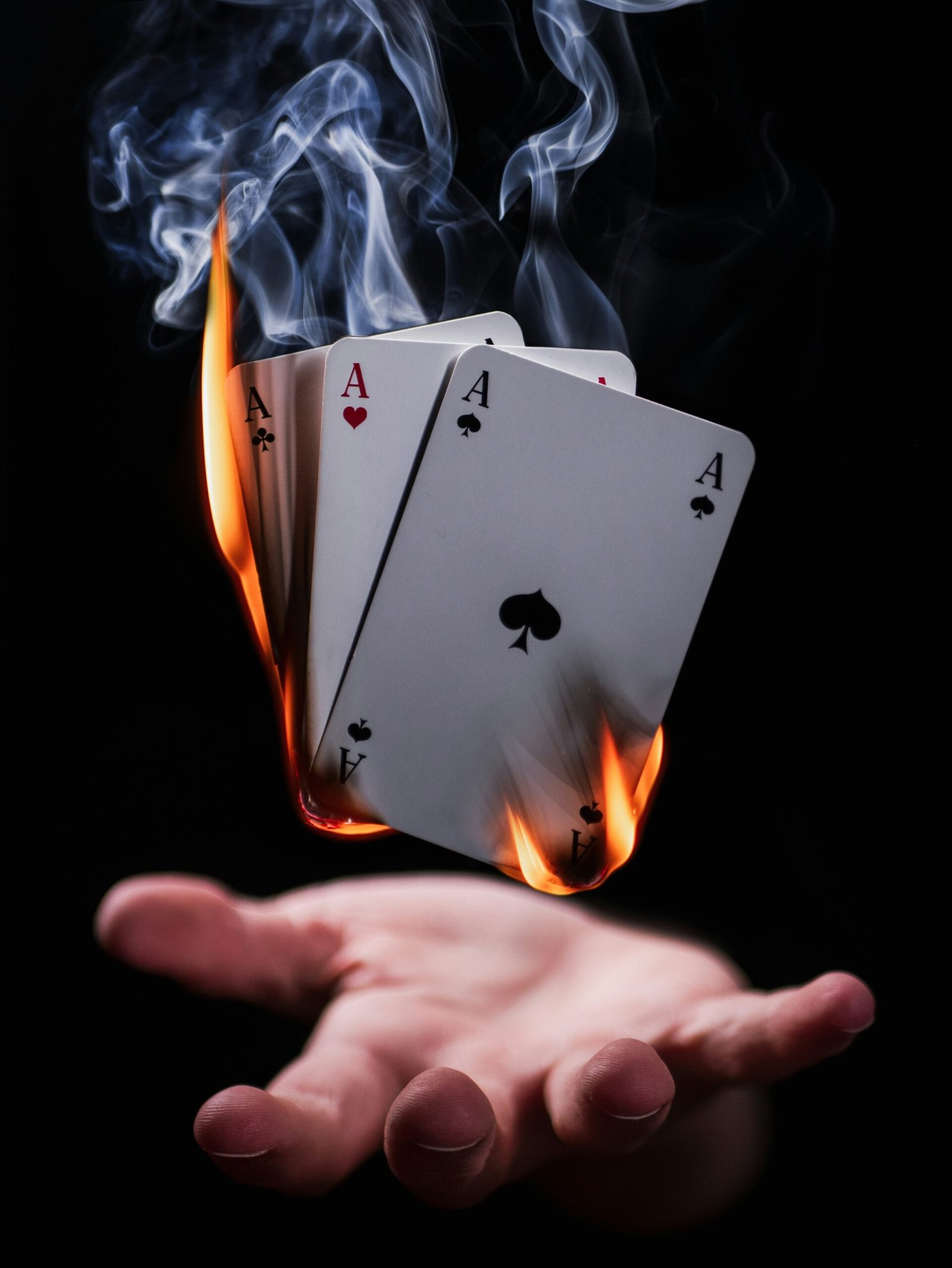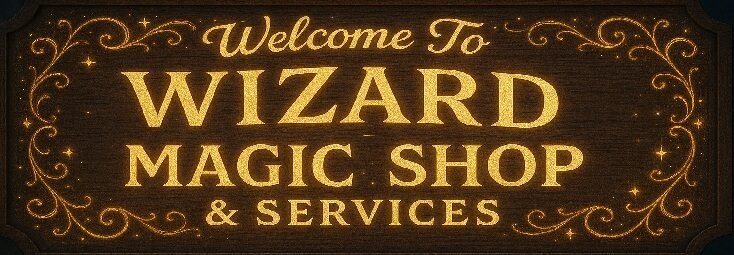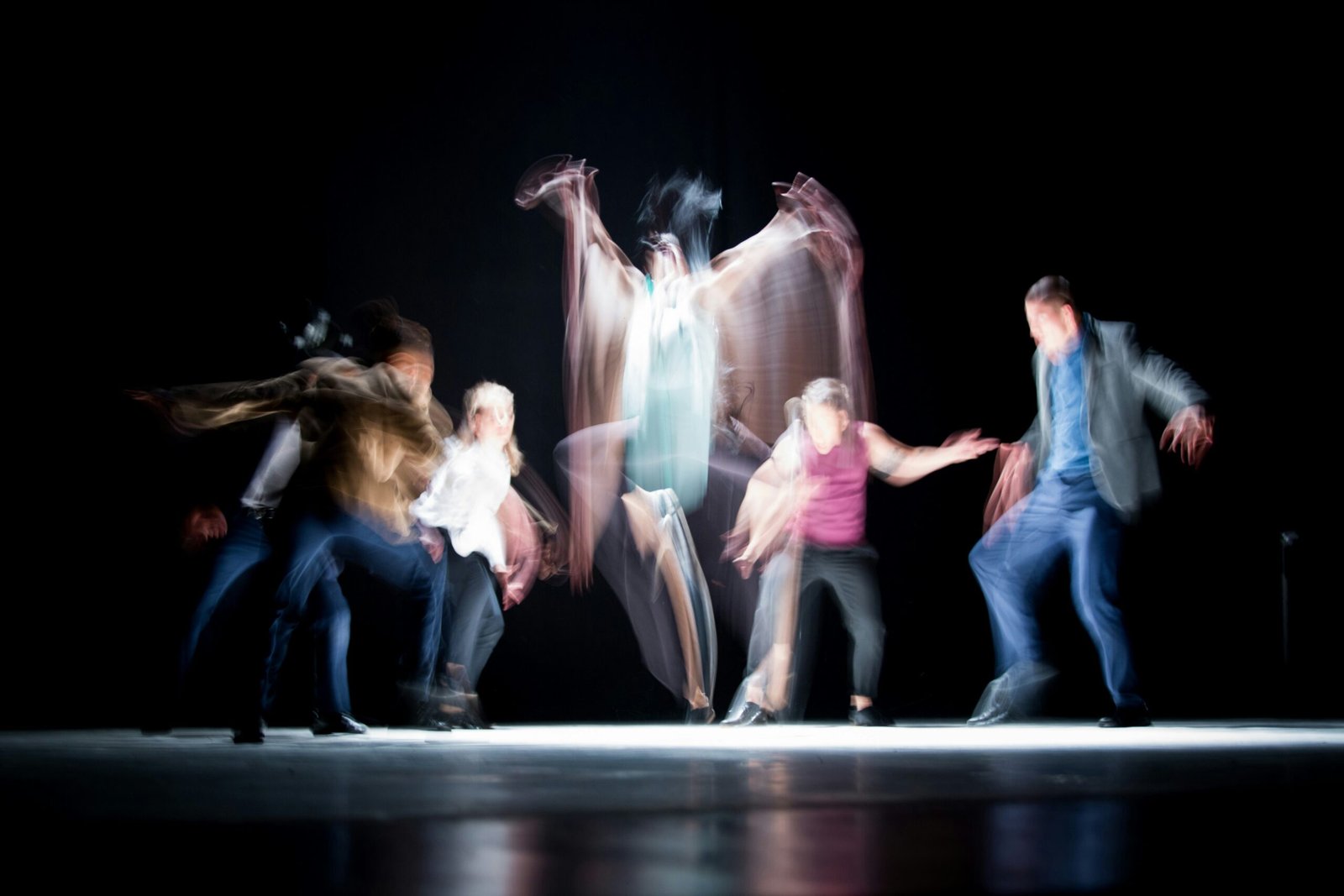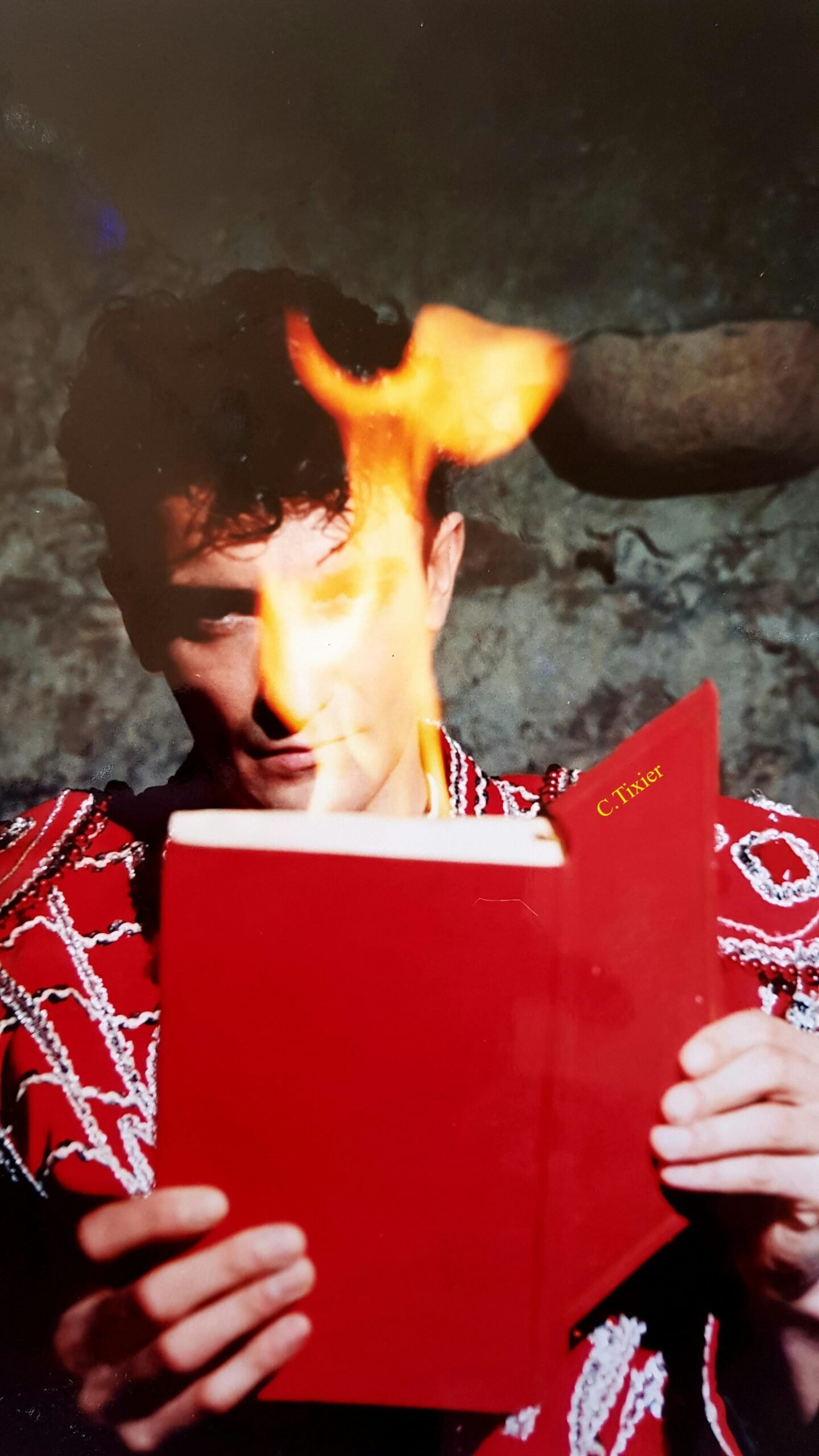The Enchanting History of the Chinese Linking Rings Magic Trick

Photo by <a href="https://unsplash.com/@juliusdrost" rel="nofollow">Julius Drost</a> on <a href="https://unsplash.com/?utm_source=hostinger&utm_medium=referral" rel="nofollow">Unsplash</a>
Origins of the Chinese Linking Rings
The Chinese Linking Rings is a captivating illusion, rich in history and cultural significance. Its origins can be traced back to ancient China, where the roots of this enchanting trick intertwine with traditional forms of entertainment and rituals. The history of the Linking Rings is often a topic of intrigue among historians and magicians alike, prompting a closer examination of how this remarkable performance art developed over the centuries.
Historical records suggest that the use of rings as props in Chinese performances dates back to the Song Dynasty (960-1279 AD). These performances incorporated various magical illusions, acrobatics, and storytelling, fascinating audiences with their skill and artistry. The Linking Rings, in particular, were likely inspired by the spiritual and philosophical symbolism found in ancient Chinese culture. The circular form of the rings represents unity and eternity, aligning with the principles of Yin and Yang which are fundamental to Chinese philosophy. As such, the rings could have been used in rituals to symbolize harmony and balance.
As the centuries progressed, the performance of magic in China became increasingly refined, with entertainers traveling to showcase their skills at festivals and court events. This not only enhanced the technique of the Linking Rings illusion but also embedded it deeper into the fabric of Chinese cultural practices. The trick’s transition from ritualistic significance to entertainment reflects broader societal changes, marking the beginning of its eventual journey to global prominence.
The 19th century saw the Linking Rings gaining international acclaim, particularly through performances by renowned magicians who popularized the trick outside of Asia. What began as a culturally significant ritual in ancient China evolved into a staple in the repertoires of magicians worldwide, captivating audiences with its simplicity and the illusion of impossibility.
Traditional Chinese Magic and Performance Arts
Within the rich tapestry of ancient Chinese culture, the realm of magic and performance arts has always held a significant place. These forms of entertainment were not merely pastimes; they served as essential components of social gatherings, rituals, and celebrations. The traditions of storytelling, acrobatics, and illusion craftsmanship were integral to the fabric of Chinese society, often woven into its festivals and ceremonial events.
Illusionists, or ‘sorcerers’ as they were often called, were highly regarded in their communities. These performers possessed a unique ability to evoke wonder and astonishment, captivating audiences with their skills. They employed not only physical dexterity but also a keen understanding of psychology to engage their spectators. The allure of seeing the impossible become possible allowed magicians to flourish within the cultural landscape, paving the way for various popular illusions and tricks that would emerge over centuries.
Among the many performance arts, traditional Chinese opera stands out as a celebrated medium in which magic often played a role. Characters in these operas frequently employed sleight of hand and tricks that mesmerized audiences, further intertwining the disciplines of storytelling and illusion. As these performance arts evolved, so too did the techniques and tools used by illusionists, leading to the development of intricate illusions such as the famous Chinese Linking Rings trick. This particular act exemplifies the bridging of visual art and performer, showcasing the dexterity and creativity that has been a hallmark of Chinese magical performance.
The historical context of traditional Chinese magic emphasizes its important role in fostering creativity and entertainment within society. These early performers not only entertained but also inspired future generations, ensuring that the art of illusion continues to captivate audiences today. From ancient festivities to modern stages, the legacy of Chinese magical arts demonstrates an enduring fascination with the art of illusion and performance.
The Evolution of the Linking Rings Trick
The Linking Rings trick, an enchanting staple in the world of magic, has undergone a fascinating evolution throughout its history. Its origins can be traced back to ancient China, where the basic concept of linking objects has been a part of traditional performances for centuries. Early practitioners utilized simple metal rings, which were crafted from readily available materials, thereby laying the groundwork for future adaptations of this captivating illusion.
As the art of magic spread across cultures, variations of the Linking Rings trick began to emerge. In Europe, particularly during the 19th century, magicians adopted this captivating illusion and refined it. They introduced new techniques and enhanced the design of the rings, transforming them into a visual spectacle. The adoption of different materials, such as lighter metals and eventually, plastic, enabled performers to experiment with size and weight. This innovation not only improved movement but also enhanced the impact of the performance, making it more accessible to diverse audiences.
The Linking Rings trick further evolved with the introduction of props designed specifically for stage use. Larger and more ornate rings were created, allowing for a dramatic presentation that caught the eyes of onlookers. Alongside physical modifications, the trick’s techniques were also refined; magicians began incorporating sleight of hand skills and choreographed routines that elevated the art form. Furthermore, as performances transitioned from intimate gatherings to grand theatre showcases, the trick was tailored to befit grander stages while still retaining its core enchanting appeal.
Today, the Linking Rings trick has been embraced by various cultures worldwide, each adding its own unique flair. This ongoing evolution underscores the trick’s adaptability, ensuring that the Linking Rings, despite its age, remains a timeless and compelling display in the world of magic, captivating audiences across generations.
Key Figures in the Development of the Linking Rings
The Chinese Linking Rings, a captivating illusion that has enthralled audiences for centuries, can be attributed to several prominent magicians who played significant roles in its evolution and popularity. One of the earliest known practitioners of this visual marvel was a Chinese magician named Ching Ling Foo during the late 19th century. His performances helped to introduce Western audiences to the aesthetics and complexities of Chinese magic, with the Linking Rings being a standout piece in his repertoire.
Another notable figure is the legendary magician Harry Houdini, who, while not the original inventor of the linking rings, adapted the trick into his own acts, elevating its popularity. Houdini’s innovative presentation style and ability to create suspense made the Linking Rings an essential part of his performances, allowing him to create a vivid connection between the magical and the theatrical. Houdini’s work demonstrated that this ancient trick could be reinterpreted to fit the narrative of a new generation.
In the 20th century, magicians like Cardini and The Great Dai Vernon further contributed to the evolution of the Linking Rings. Cardini’s sleight of hand and elegant presentation breathed new life into the trick, while Vernon’s focus on audience participation emphasized the importance of performance in magic. Together, these figures not only showcased the Linking Rings with distinctive flair but also guided the future of magic, inspiring countless generations of performers to explore the depths of this timeless trick.
As the Linking Rings continued to gain prominence, performers such as Doug Henning and later David Copperfield incorporated modern techniques, ensuring that this classic illusion retained its place in the limelight. The seamless integration of storytelling and intricate manipulation has kept audiences captivated, proving that the Linking Rings remain a cherished component of the magician’s toolkit. Each of these influential figures has shaped how the Linking Rings are viewed, fundamentally contributing to its legacy within the realm of magic.
The Chinese Linking Rings in Western Magic
The Chinese Linking Rings trick has significantly influenced the landscape of Western magic since its introduction. This illusion, which features a series of metal rings that appear to link and unlink magically, captivated audiences upon its debut in the West. Its origins can be traced back to ancient China, where it served as a popular form of entertainment. However, the transition from Chinese culture to Western stages marks a pivotal moment in its history, redefining its presentation and style.
Initially introduced in the late 19th century through traveling shows and exhibitions, the Linking Rings enchanted Western audiences with its blend of simplicity and visual appeal. Magicians such as Harry Houdini and Chung Ling Soo played integral roles in popularizing the trick, incorporating it into their acts and showcasing its versatility. The rings not only provided a platform for demonstration of sleight of hand but also allowed performers to engage with their audiences through storytelling and theatrical presentation.
As the trick evolved, it witnessed numerous adaptations to cater to cultural sensibilities and preferences. Western magicians began altering the presentation of the linking rings, incorporating elements of drama, humor, and even choreography. This evolution transformed the trick into a staple of magic performances worldwide. The Linking Rings trick became not only a demonstration of skill but also an art form, captivating viewers with its intricate movements and seemingly impossible outcomes.
Consequently, the Chinese Linking Rings have secured a respected place within the global magic culture. They are ubiquitous in magic shops and are frequently taught to aspiring magicians as a vital foundational technique. The combination of its historical roots and continual adaptation ensures that the Linking Rings remain a beloved classic in the realm of magic, bridging cultures and captivating hearts across the globe.
Techniques and Methods Behind the Trick
The Chinese Linking Rings magic trick is a captivating performance that combines skill, artistry, and a profound understanding of audience psychology. At the heart of this illusion lies several techniques that enable magicians to create a seamless experience, immersing the audience in wonder. One of the essential skills required is the ability to engage the audience effectively. Successful performers often establish a rapport with their viewers, drawing them into the narrative and setting the stage for astonishment. This connection is vital; a magician needs to maintain the audience’s attention, making every moment impactful.
Misdirection is another critical element in the performance of the Chinese Linking Rings. Magicians utilize techniques to divert the audience’s focus away from the mechanics of the trick. This can involve gestures, storytelling, or even eye contact, ensuring that spectators remain captivated by the spectacle rather than deciphering how the illusion is achieved. The orchestrated timing of these distractions is crucial, as it guides the audience’s perception, allowing for a more magical experience.
Additionally, the handling of props is a skill that requires diligent practice and finesse. The linking rings are often made of metal and must be handled with precision to create the illusion of them effortlessly linking and unlinking. Magicians must master various grips and movements, ensuring that their timing is impeccable and that each motion appears fluid and natural. Every transition, whether it be a ring joining another or separating, must feel spontaneous, enhancing the overall impact of the performance.
Ultimately, the enchantment of the Chinese Linking Rings trick stems from the mastery of these techniques. Understanding audience engagement, utilizing misdirection, and deftly handling props all contribute to the grandeur of the illusion, showcasing the craftsmanship involved in this timeless magical performance.
Cultural Symbolism and Interpretations
The Chinese Linking Rings, a classic in the world of magic, hold deep cultural meanings that resonate within Chinese society. The rings themselves are emblematic of unity and continuity, often interpreted as a symbol of the interconnectedness of all things. The circular shape of the rings represents the cyclical nature of life, suggesting that just as the rings link together seamlessly, so too do relationships and events in the human experience. This encapsulates a broader philosophy prevalent in Chinese culture: the emphasis on harmony and wholeness.
Color also plays a pivotal role in the symbolic interpretation of the Chinese Linking Rings. Traditionally, vibrant colors are associated with various meanings; for example, red symbolizes good fortune and happiness, while gold represents wealth and prosperity. The colors used in the rings may reflect the performer’s desire to convey positive energy and auspiciousness to the audience. Through the manipulation of these rings, the magician not only entertains but also invites the spectators to contemplate deeper themes such as fate, destiny, and the enchantment of the unknown.
The perception of the Chinese Linking Rings is heavily influenced by cultural context. For instance, in Western performance arts, the rings are often viewed as mere props for visual spectacle, whereas in traditional Chinese narratives, they may represent ancestral heritage and cultural wisdom. This dichotomy in interpretation enriches the magic trick with layers of meaning, challenging performers to remain sensitive to their audiences’ cultural backgrounds. The effective magic show, therefore, intertwines skillful presentation with a nuanced understanding of these cultural symbols, enhancing audience engagement and appreciation.
Modern Adaptations and Innovations
The Chinese Linking Rings magic trick, steeped in history, has undergone significant transformations to remain captivating in contemporary performances. Modern magicians have embraced innovative approaches, updating the trick with technology, choreography, and thematic elements that resonate with today’s audiences.
One of the noteworthy modern adaptations is the incorporation of multimedia elements. Performers often utilize projection mapping and LED screens to enhance their presentation, adding visual effects that complement the classic illusion. This technology can create elaborate backdrops, adding depth to the performance and engaging the audience on multiple sensory levels. By merging traditional sleight of hand with high-tech visuals, magicians have not only expanded the trick’s aesthetic appeal but also its narrative capacity.
Additionally, contemporary magicians are reimagining the narrative of the Chinese Linking Rings, infusing original themes that reflect societal issues or personal stories. This storytelling aspect allows performers to connect with their audience on a deeper level. For instance, a magician might use the linking rings to symbolize unity and connection in a culturally diverse society, thereby giving the trick a relevant theme that speaks to modern ethos.
Moreover, choreography has evolved alongside these adaptations. Many performers now incorporate dance-like movements, creating a seamless flow between the rings and their bodies. This incorporation of movement transforms the illusion into a performance art piece, enhancing both the visual stimulation and entertainment value. Through calculated movements, the linking rings are not just a magic trick but an integral part of a larger artistic narrative.
Ultimately, while the Chinese Linking Rings has roots in ancient tradition, its modern adaptations showcase the ingenuity and creativity of today’s performers. By integrating contemporary elements, they not only preserve the trick’s charm but also ensure its relevance in the dynamic landscape of entertainment.
Legacy and Influence on Future Generations
The Chinese Linking Rings is not merely a captivating magic trick; it embodies a rich legacy that has persisted through generations of magicians. As a staple in the magician’s repertoire, this illusion has transcended cultural boundaries, influencing various aspects of performance magic across the globe. Its simple yet profound mechanics have turned it into an essential teaching tool for aspiring performers. Many novice magicians start their journey with this trick, as it introduces key principles of misdirection, timing, and audience engagement.
Furthermore, the Chinese Linking Rings has inspired a myriad of adaptations, variations, and innovations. As performers modify the original routine to suit their individual styles, they contribute to the evolving narrative of this time-honored illustration. This adaptability not only fosters creativity but also reinforces the importance of personal interpretation in the art of magic. In doing so, the rings connect the magician to their predecessors and contemporaries alike, cultivating a sense of community within the magical arts.






